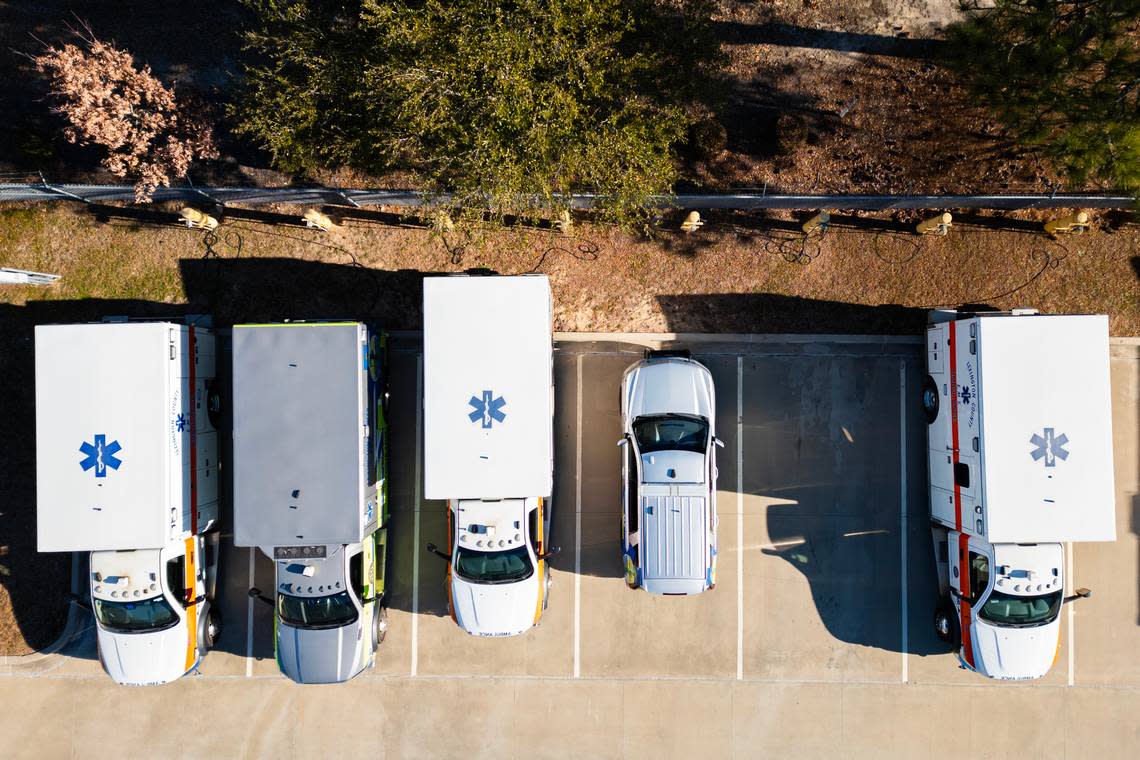After complaints, Lexington County approves major emergency vehicle purchase

Responses to emergencies across Lexington County stand a chance to improve after a multimillion-dollar vote by Lexington County Council this week.
Emergency medical services are slated to receive two new ambulance units and seven new quick-response vehicles, while the county fire department will also receive three new pumper trucks, a ladder truck, brush truck and bunker gear.
The new equipment will zero out the county’s remaining COVID-era state recovery funds, of the more than $10 million remaining in the balance.
Time is of the essence in getting the remaining funds spent, said County Administrator Lynn Sturkie at Monday’s County Council meeting. Under pandemic rules, the remaining funds distributed to local governments must be allocated before the end of the year and spent by the end of 2026.
Acquiring a new emergency vehicle can take as long as two years, Sturkie and emergency officials said, so he asked council members to get the ball rolling now. He said some of the items were initially included in the county’s proposed 2024-25 budget, but staff realized the process might outlast the annual budget.
The move comes after a state senator’s attempts to include money for a new ambulance in the state budget foundered, as county officials argued budget language requiring an ambulance specifically for Chapin wouldn’t have allowed the county fleet to deploy the ambulance countywide. That request came as Chapin-area residents have complained of long wait times for emergency responders in the many lakeside communities that have sprung up in recent years.
The county has taken steps to address the issue, cutting wait times as it deployed four newly arrived ambulances in April.
EMS Chief Brian Hood said adding to his fleet of 29 ambulances would increase the lifespan of the vehicles. “Right now, we hot-swap the vehicles between the day shift and the night shift,” Hood said. “It’s running 24 hours. The night shift runs it hard all night, then the day shift comes back on and run it hard all day. It can outlive the life of the drive frame.”
Two of the new fire pumper trucks, which carry water to extinguish fires, will be replacements, while the third pumper truck will be deployed to the north side of Lake Murray, fire chief Mark Davis told the council. Meanwhile, a new 100-foot ladder truck will be deployed to the west side of Lexington County because the service is worried about being able to respond to fires in the taller structures in a county industrial park, he said.
A bush truck is needed for the fire department because, as more new housing developments spring up in the less-developed parts of the county, it increases the chances of loss to a wildfire, Davis said.
The new gear will also allow firefighters to turn over some of their existing gear.
“After 10 years, even if it’s never been used, you have to throw it away,” the fire chief said.
The county’s fire engines should also be replaced every 10 years, Davis said, but the average age of a vehicle in the fleet is around 18 years.
“We’ve got two trucks now that are 30 years old,” he said, “We’re running trucks without air conditioning.”
The end of the county’s COVID recovery funds means some other agencies will have to do without. Sturkie told council he had a $5 million request to improve municipal water and sewer lines in the county; $4.6 million for Midlands Technical College; $2 million for broadband internet improvements; and nearly $2 million for a new fire truck and training center for the separate Irmo Fire District. But council members voted unanimously to prioritize the county’s emergency needs.
“This is what the citizens have been fussing for, is fire and EMS,” said Councilman Scott Whetstone.
Sturkie said the county will look for other funding sources for those additional items, plus any additional money that might be needed to complete the emergency vehicle purchases, in its regular budget process.


